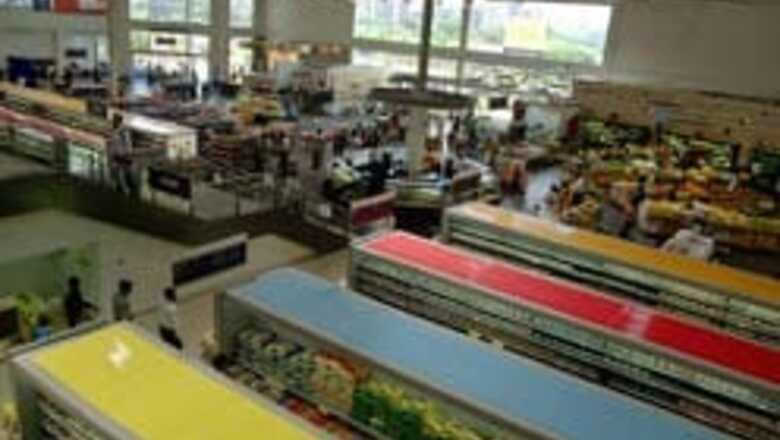
views
Mumbai: Twenty minutes before the doors open at HyperCity, suburban Mumbai's new hypermarket, a long line of shoppers wait restlessly while employees stock shelves with everything from fruit to decorative fountains.
First-time visitor Mariam Ghoghawalla said she had only come to see the store, but added she was open to buying "something small".
HyperCity, owned by K Raheja group and sprawling across 120,000 square feet, is symbolic of major Indian retailers' efforts to expand their meagre slice of the market.
Other firms including Pantaloon Retail and Trent are also setting up more hypermarkets, targeting economies of scale and bigger profit margins on non-food items.
India's major retailers have an annual turnover of an estimated $7 billion, but that only accounts for 3 per cent of the overall retail market, compared with 20 per cent in China and 40 per cent in Thailand.
The Raheja group, which also owns part of department store chain Shopper's Stop, plans to open six to eight more hypermarkets over the next 18 months.
The group has seen some encouraging signs at HyperCity.
"The response to the packed fruits and vegetables was an education for us," said Chief Executive Andrew Levermore.
"We were led to believe Indian women wouldn't buy them if they couldn't touch and feel them, but we can't keep up: we're replenishing these shelves at least eight times a day."
Still, the big retailers face a number of hurdles.
The rising cost of real estate and scarcity of large plots of land in big cities pose a challenge, while poor roads and transportation are a deterrent to development in the suburbs.
"Convenience and proximity are very important to the Indian shopper. Even those who have a car don't want to spend hours to get to a store," said Anil Rajpal at consultancy KSA-Technopak.
"The Indian consumer is also quite pampered. We can call and have groceries delivered at our door and get even very small packs, which hypermarkets would find difficult to do," he said.
Furthermore, competition is heating up, with regional retailers such as RPG Group's Spencer's, Subhiksha and Nilgiri's looking to expand beyond their bases in the south as supply chains and distribution improve and investor interest in Indian retail grows.
Small and Big
The food and grocery sector, which makes up nearly 77 per cent of the total retail market, is dominated by small local stores.
"Our competition is not other formal retailers. We are going head-on with the traditional mom-and-pop stores," said managing director of Chennai-based Subhiksha, R Subramanian, which has a chain of discount supermarkets and pharmacies.
At the other end of the market, foreign investors are also keen to move into India.
After the Indian government allowed single-brand foreign retailers to take up to 51 per cent stakes in joint ventures earlier this year, there is growing speculation that it will soon also open doors to multiple-brand retailers like Tesco Plc, Wal-Mart and Carrefour.
Major retailers' turnover is forecast to grow at 25-30 per cent a year over the next four years, attracting big players such as Bharti Enterprises and Reliance Industries Ltd to the market.
Reliance is investing $750 million initially and has started managing the supply chain for about 20 state-owned supermarkets in Mumbai.
For midsize players like Subhiksha, that may be bad news, but Subramanian is confident.
"Large-format retailers are being forced to set up in expensive in-city locations, which impacts efficiency, whereas small guys are fairly efficient in the back-end, and score in proximity," he said.
Analysts say hypermarkets can thrive in suburbs that are not too distant, partly by striking land deals.
Raheja is also a realty developer, while Pantaloon has a joint venture with Singapore's CapitaLand to manage malls.
The bigger retailers are also differentiating themselves in terms of store size: Spencer's, which previously had a franchise deal with Dairy Farm International Holdings Ltd, has hypermarkets that measure about 25,000 sq ft each, while Pantaloon's Big Bazaars range from about 30,000 sq ft in the city to 65,000 sq.ft in the suburbs.
"There is scope for both - for consumers it's a question of all under one roof or convenience and proximity," KSA-Technopak's Rajpal said.
The task for Raheja's Levermore, then, is to give shoppers like Ghoghawalla reason to buy everything she needs at HyperCity.




















Comments
0 comment